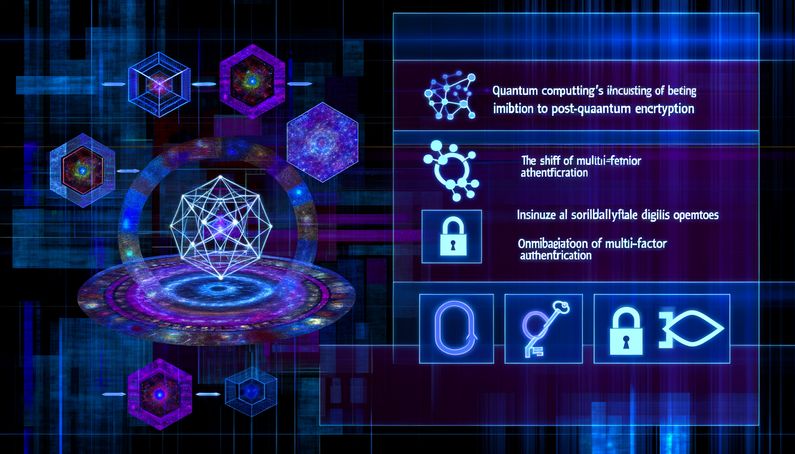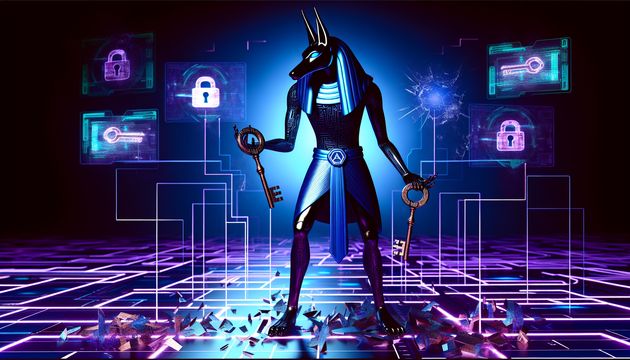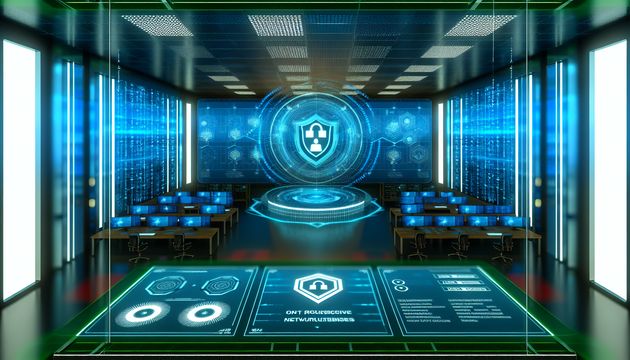
Navigating the Quantum Threat: Securing Our Digital Future
Quantum computing is reshaping the landscape of cybersecurity, posing unprecedented challenges to traditional encryption methods. Unlike classical computers, quantum computers leverage quantum bits, or qubits, to perform calculations at speeds previously unimaginable. This capability threatens the very foundation of public key cryptography (PKC), which underpins much of our current digital security. Algorithms like RSA and ECC, which rely on the difficulty of problems such as integer factorization, are vulnerable to quantum attacks. Shor’s Algorithm, for instance, can efficiently solve these problems, potentially rendering current encryption methods obsolete (BleepingComputer).
The timeline for the realization of this quantum threat is uncertain, with some experts predicting the emergence of quantum computers capable of breaking RSA-2048 encryption by 2055-2060. However, advancements in quantum error correction and algorithm design could accelerate this timeline to as early as 2035 (The Quantum Insider). This looming threat necessitates immediate action to secure sensitive data against future quantum attacks.
The Quantum Threat to Encryption
Quantum Computing and Encryption Vulnerabilities
Imagine a computer that can solve complex puzzles in seconds, puzzles that would take today’s computers years to crack. That’s the power of quantum computing. This revolutionary technology poses a direct threat to current encryption methods, particularly those based on public key cryptography (PKC). Traditional encryption algorithms, such as RSA and ECC, rely on the difficulty of mathematical problems like integer factorization and discrete logarithms. However, quantum computers can efficiently solve these problems using algorithms like Shor’s Algorithm, developed by Peter Shor in 1994. Shor’s Algorithm allows quantum computers to perform prime factorization exponentially faster than classical computers, threatening the security of widely used encryption methods (BleepingComputer).
Timeline of Quantum Threat Realization
While quantum computers capable of breaking high-security encryption are not yet a reality, estimates suggest they could emerge within the next few decades. A report by MITRE indicates that a quantum computer capable of breaking RSA-2048 encryption might not be available until 2055-2060. However, some experts argue that advancements in error correction and algorithm design could accelerate this timeline, potentially bringing such capabilities by 2035 (The Quantum Insider). This uncertainty underscores the need for immediate action to secure sensitive data against future quantum threats.
Post-Quantum Cryptography (PQC) as a Solution
To mitigate the risks posed by quantum computing, the development and implementation of post-quantum cryptography (PQC) are crucial. PQC algorithms are designed to withstand the power of quantum computers by relying on mathematical problems that remain difficult for both classical and quantum systems. These include lattice-based, hash-based, and multivariate polynomial equations. The National Institute of Standards and Technology (NIST) has been at the forefront of standardizing PQC algorithms, with the first three standards finalized in 2025. These include ML-KEM (based on the CRYSTALS-Kyber algorithm) for general encryption, ML-DSA (using CRYSTALS-Dilithium) for digital signatures, and SLH-DSA (from Sphincs+) also for digital signatures (Palo Alto Networks).
Immediate Actions for Organizations
Organizations must take proactive steps to prepare for the quantum threat. This involves creating a quantum threat roadmap to assess risks and identify where cryptography is used within their systems and services. Staying updated on NIST-approved quantum-safe algorithms and integrating them into existing infrastructures is essential. Budgeting for these upgrades now will help mitigate future financial strain and ensure preparedness for the inevitable technological wave. Additionally, monitoring adversarial quantum programs and securing the quantum supply chain are critical to maintaining technological and security leadership (ITProToday).
The Role of Multi-Factor Authentication
While the threat of quantum computing looms, passwords remain a fundamental aspect of security. However, relying solely on passwords is insufficient in the face of quantum threats. Multi-factor authentication (MFA) provides an additional layer of security by combining something the user knows (password), something the user has (token or device), and something the user is (biometric verification). This approach reduces the risk of unauthorized access, even if passwords are compromised. Organizations are encouraged to adopt MFA as part of a comprehensive security strategy to protect sensitive data against both classical and quantum threats (BleepingComputer).
By understanding the quantum threat to encryption and taking proactive measures, organizations can safeguard their digital infrastructure against future quantum attacks. The transition to post-quantum cryptography and the implementation of robust security practices, such as multi-factor authentication, are essential steps in ensuring the continued protection of sensitive information in the quantum era.
Final Thoughts
As we stand on the brink of a quantum revolution, the urgency to adapt our cybersecurity measures cannot be overstated. The transition to post-quantum cryptography (PQC) is not just a theoretical exercise but a practical necessity. Organizations must proactively integrate NIST-approved quantum-safe algorithms into their infrastructures to safeguard against potential quantum threats. This includes adopting PQC standards like ML-KEM and ML-DSA, which are designed to withstand quantum attacks (Palo Alto Networks).
Moreover, enhancing security through multi-factor authentication (MFA) remains crucial. By combining passwords with additional verification methods, MFA provides a robust defense against unauthorized access, even in a quantum-enabled future (BleepingComputer). As we prepare for this technological leap, staying informed and agile will be key to maintaining security and trust in our digital systems.
References
- Quantum leap: Passwords in the new era of computing security, 2025, BleepingComputer source url
- Quantum computing is a long-term cybersecurity risk but deserves immediate attention, analysts report, 2025, The Quantum Insider source url
- What is post-quantum cryptography (PQC)?, 2025, Palo Alto Networks source url
- Quantum computing trends and predictions 2025 from industry insiders, 2025, ITProToday source url



